Boneset, Common Boneset, Feverwort, Indian Sage, Wild Isaac - Eupatorium perfoliatum
|
Eupatorium perfoliatum - Boneset, Common Boneset, Feverwort, Indian Sage, Wild Isaac. There are 24 Eupatorium species in North America - over 40 worldwide with Thoroughworts also being found in Europe and Asia. It used to be a larger genus, with Eutrochium (Joe Pye Weed) being included in Eupatorium until fairly recently. Eupatorium are among the Asteraceae that have no ray florets.
Common Boneset, Eupatorium perfoliatum, is the most widely distributed of the North American Eupatorium species, being found in moist areas such as marshes, swamps, wet pastures, and lakesides in every state east of the Rocky Mountains, and most of eastern Canada. The plant has been used historically for treatment of a variety of ailments, and its use in alleviating the deep-seated pain in the joints caused by influenza provided the common name Boneset. Eupatorium species are often called Thoroughworts, a name also provided by this plant because of the perfoliate leaf structure - the stem goes "through" the leaves.
Found in:
AL, AR, CT, DC, DE, FL, GA, IA, IL, IN, KS, KY, LA, MA, MD, ME, MI, MN, MO, MS, NC, ND, NE, NH, NJ, NY, OH, OK, PA, RI, SC, SD, TN, TX, VA, VT, WI, WV, GS
Leave comments on Eupatorium perfoliatum at this link. | 
Distribution of Eupatorium perfoliatum in the United States and Canada:
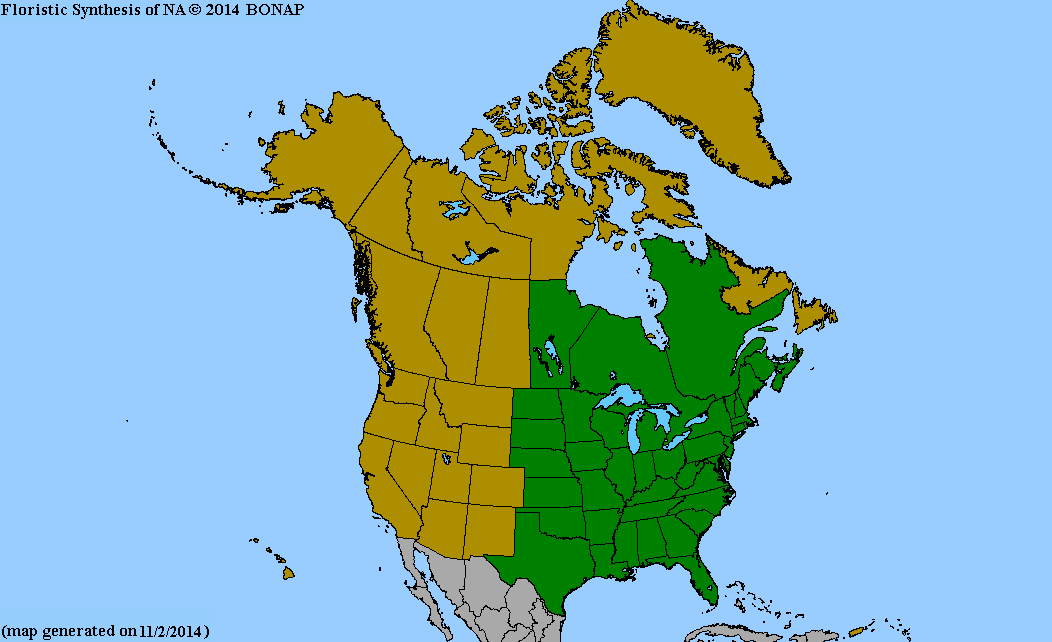
Map courtesy of The Biota of North America Program.
Map color key
Search Our Database: Enter any portion of the Scientific, Common Name, or both.
Do a general Google search of the entire site:
#ad
 Follow USWildflowers on Twitter
#ad
| | Site: Lake Huron North Channel, Ontario, Canada Date: 2015-August-18 | Photographer: Gerald C. Williamson
Nikon D7000
Tamron SP 90MM f/2.8 AF Macro | | The fragrant inflorescences of Eupatorium perfoliatum are 2- to 8-inch corymbose clusters of many flowerheads, each of which will have 7 to 14 (reports of up to 19) small white, 5-lobed disk florets. The long style in each floret is divided and extremely exserted, giving the inflorescence a fuzzy appearance. | | 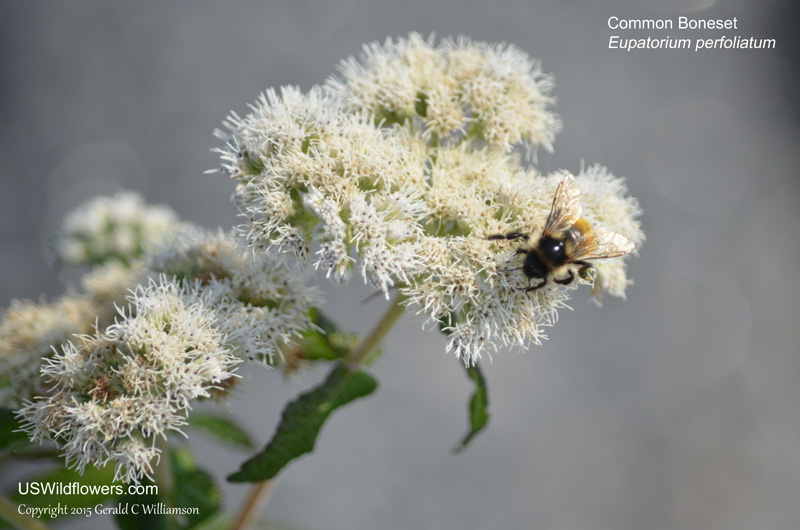
| | Site: Lake Huron North Channel, Ontario, Canada Date: 2015-August-18 | Photographer: Gerald C Williamson
Nikon D7000 | | Common Boneset grows from 15 inches (about the height of this plant) to as much as 5 feet tall. The opposite, simple (unlobed) leaves have a leathery appearance. | | Click on the photo for a larger image
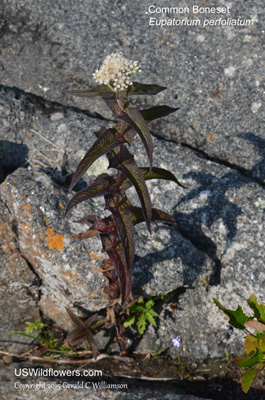
| | Site: Lake Huron North Channel, Ontario, Canada Date: 2015-August-18 | Photographer: Gerald C Williamson
Nikon D7000 | | The leaves of Eupatorium perfoliatum are opposite (occasionally whorled) and sessile with serrate margins. Each pair of opposite leaves are "connate" - they are united at their base (key characteristic for this species.) Thus the stem is perfoliate, providing the species epithet. Eupatorium species are often called Thoroughworts, a name also provided by this plant because of the perfoliate leaf structure - the stem going "through" the leaves. | | Click on the photo for a larger image
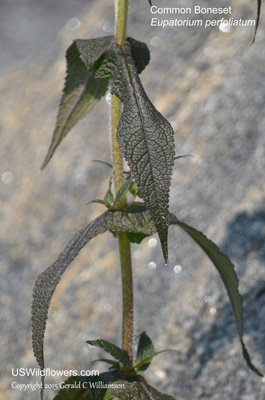
| | Site: Lake Huron North Channel, Ontario, Canada Date: 2015-August-18 | Photographer: Gerald C Williamson
Nikon D7000 | | The hairy stem, if it branches, does so near the top, with each branch terminating in an inflorescence of white flowers. | | Click on the photo for a larger image
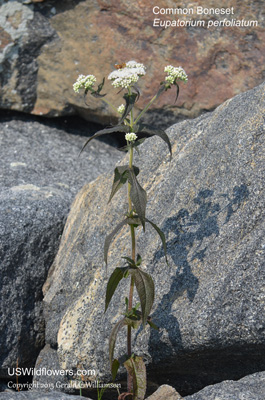
| | Site: Lake Huron North Channel, Ontario, Canada Date: 2015-August-18 | Photographer: Gerald C Williamson
Nikon D7000 | | The fragrant inflorescences of Eupatorium perfoliatum are 2- to 8-inch corymbose clusters of many flowerheads, each of which will have 7 to 14 (reports of up to 19) small white, 5-lobed disk florets. The long style in each floret is divided and extremely exserted, giving the inflorescence a "fuzzy" appearance. | | Click on the photo for a larger image
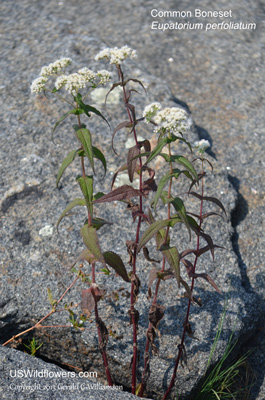
|
References used for identification and information:
|
|
| |
| #ad
|
|







